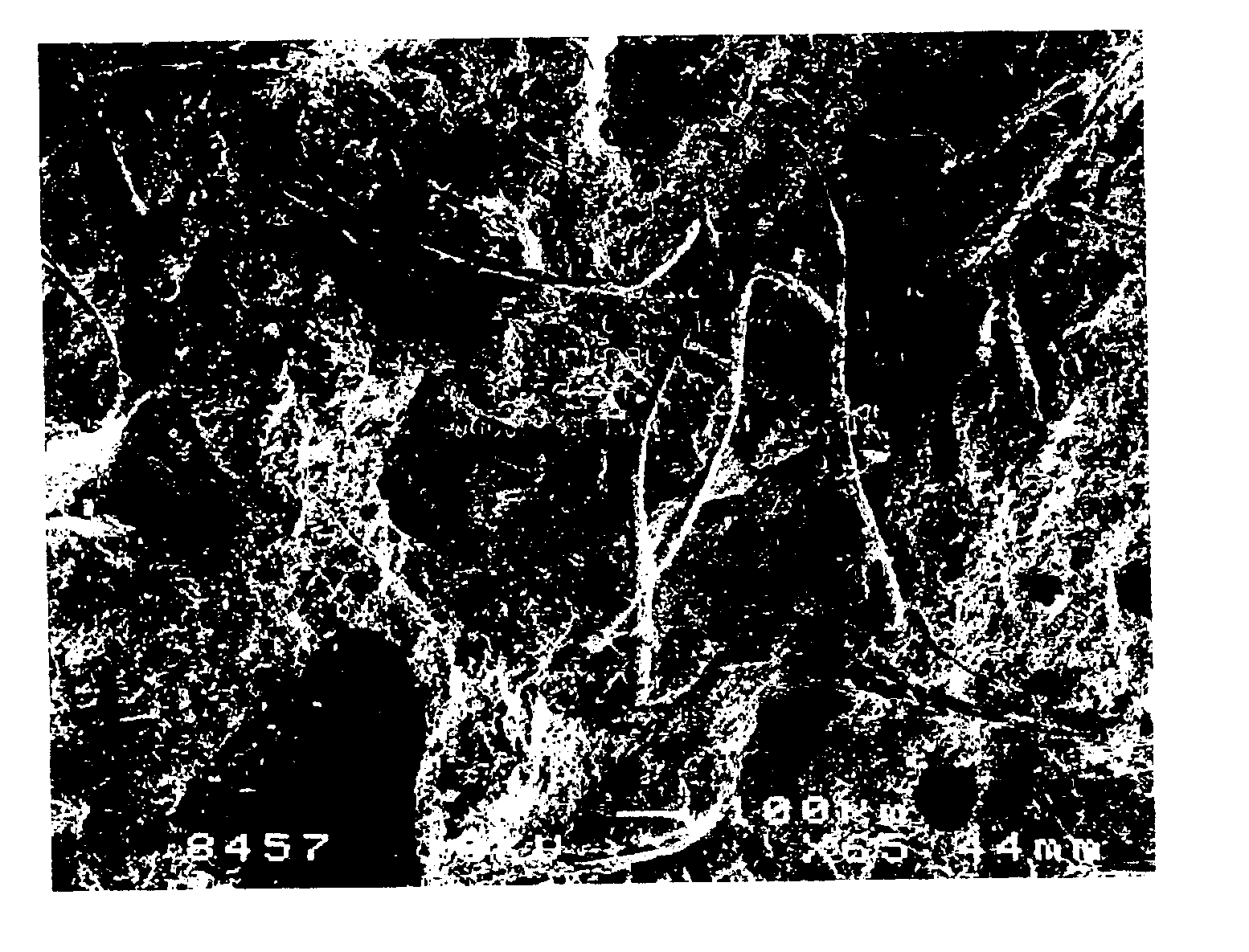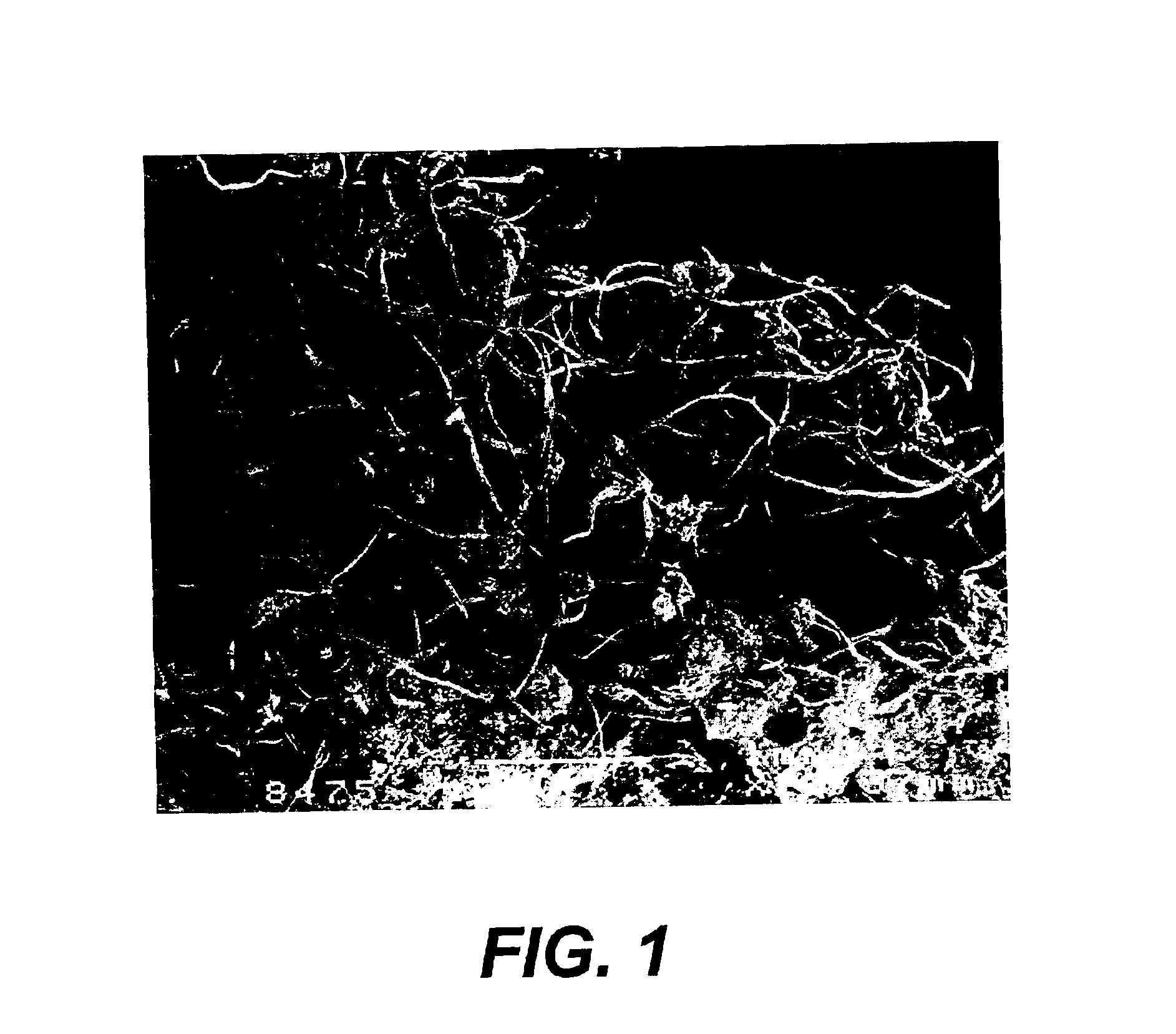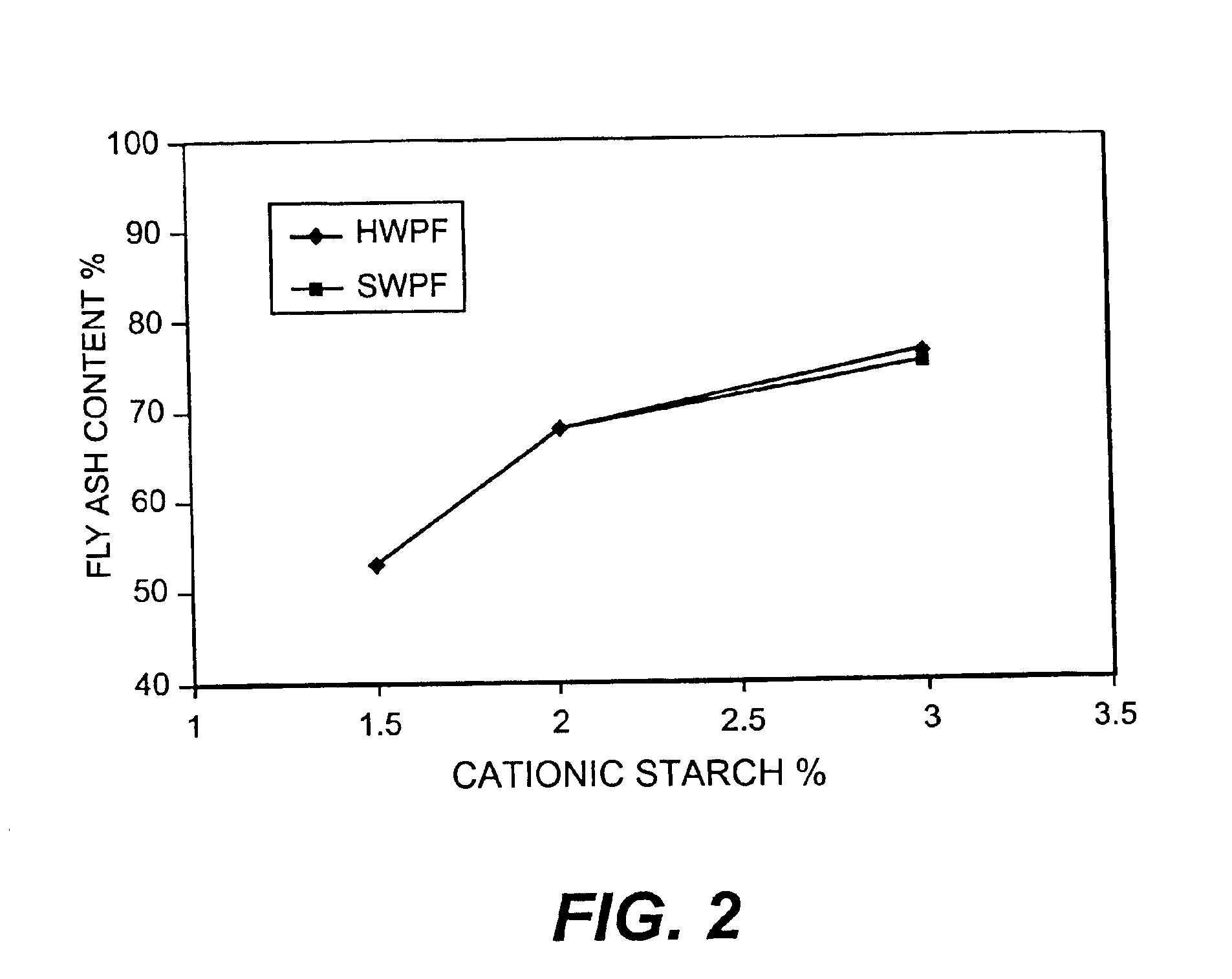Fiber reinforced mineral-based materials and methods of making the same
a technology of mineral-based materials and fiber reinforced materials, which is applied in the direction of water-setting substance layered products, solid waste management, domestic articles, etc., can solve the problems of affecting the mechanical behavior of the product, affecting the compressive strength of concrete to be only 18 to 1/12, and mixing and dispersion is typically more demanding, so as to reduce shrinkage and improve tensile strength
- Summary
- Abstract
- Description
- Claims
- Application Information
AI Technical Summary
Benefits of technology
Problems solved by technology
Method used
Image
Examples
example 1
Effect of Fiber Treatment on the Compressive Strength at Fiber Volume Fraction 2.0% for Seven Days
[0045]
TABLE 1StrengthSample No.VfAgeDim. (in)Load (lb)(psi)Fly Ash %Control032*2*21047026170Control032*2*21036025900Control032*2*21005025120Control Avr032*2*21029325730Control072*2*21510037750Control072*2*21653041320Control072*2*21644041100Control Avr072*2*21602340050
[0046]Table 1 shows the compressive strength of mineral-based materials without any fiber volume fraction for a three and seven day period. Vf represents fiber volume fraction in percent. Age represents the number of days of curing. The dimensions of the mineral-based material is 2 inches in width by 2 inches in height by 2 inches in depth. The load is measured in pounds (lb). The strength is measured in pounds per square inch (psi).
[0047]
TABLE 2SampleStrengthNo.VfAgeDim. (in)Load (lb)(psi)Fly Ash %3272*2*211330283203272*2*212120303003272*2*211640291003 Avr272*2*21169629240
[0048]Table 2 shows the compressive strength of min...
example 2
Effect of Fiber Treatment on the Compressive Strength at Fiber Volume Fraction 1.2% for Seven Days
[0055]
TABLE 6StrengthSample No.VfAgeDim. (in)Load (lb)(psi)Fly Ash %Control032*2*21047026170Control032*2*21036025900Control032*2*21005025120Control Avr032*2*21029325730Control072*2*21510037750Control072*2*21653041320Control072*2*21644041100Control Avr072*2*21602340050
[0056]Table 6 shows the compressive strength of mineral-based materials without any fiber volume fraction cured for either a three and seven day period. Vf represents fiber volume fraction in percent. Age represents the number of days of curing. The dimensions of the mineral-based material is 2 inches in width by 2 inches in height by 2 inches in depth. The load is measured in pounds (lb). The strength is measured in pounds per square inch (psi).
[0057]
TABLE 7StrengthSample No.VfAgeDim. (in)Load (lb)(psi)Fly Ash %31.272*2*2140103502031.272*2*2121803045031.272*2*214100352503 Avr1.272*2*21343033570
[0058]Table 7 shows the compr...
example 3
Effect of Fiber Treatment on the Compressive Strength at Fiber Volume Fraction 0.6% for Seven Days
[0065]
TABLE 11StrengthSample No.VfAgeDim. (in)Load (lb)(psi)Fly Ash %Control032*2*21047026170Control032*2*21036025900Control032*2*21005025120Control Avr032*2*21029325730Control072*2*21510037750Control072*2*21653041320Control072*2*21644041100Control Avr072*2*21602340050
[0066]Table 11 shows the compressive strength of mineral-based materials without any fiber volume fraction cured for periods of either three or seven days. Vf represents fiber volume fraction in percent. Age represents the number of days of curing. The dimensions of the mineral-based material is 2 inches in width by 2 inches in height by 2 inches in depth. The load is measured in pounds (lb). The strength is measured in pounds per square inch (psi).
[0067]
TABLE 12StrengthSample No.VfAgeDim. (in)Load (lb)(psi)Fly Ash %30.672*2*2163704092030.672*2*2159303982030.672*2*216380409503 Avr0.672*2*21622640560
[0068]Table 12 shows the...
PUM
| Property | Measurement | Unit |
|---|---|---|
| length | aaaaa | aaaaa |
| length | aaaaa | aaaaa |
| temperatures | aaaaa | aaaaa |
Abstract
Description
Claims
Application Information
 Login to View More
Login to View More - R&D
- Intellectual Property
- Life Sciences
- Materials
- Tech Scout
- Unparalleled Data Quality
- Higher Quality Content
- 60% Fewer Hallucinations
Browse by: Latest US Patents, China's latest patents, Technical Efficacy Thesaurus, Application Domain, Technology Topic, Popular Technical Reports.
© 2025 PatSnap. All rights reserved.Legal|Privacy policy|Modern Slavery Act Transparency Statement|Sitemap|About US| Contact US: help@patsnap.com



